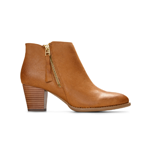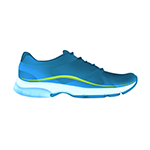
How to Speed Up Your Runner’s Knee Recovery
 Whether
you’re a legend on the track or just enjoy the occasional jog around the
neighborhood, you already know that recovering from runner’s knee is no joke. From taking some much-needed
R&R to offering your body some extra cushioning and support, there are several ways you can support your
knees on the road to recovery.
Whether
you’re a legend on the track or just enjoy the occasional jog around the
neighborhood, you already know that recovering from runner’s knee is no joke. From taking some much-needed
R&R to offering your body some extra cushioning and support, there are several ways you can support your
knees on the road to recovery.
For the know-how on knee recovery after running, we’re exploring an overview of the right kind of footwear for maximum knee support (hint: they’re more stylish than you think).
Read on to learn more about runner’s knee, key steps you’ll want to take to prevent further injury, and helpful exercises and stretches to help rehabilitate your joints and muscles so you can prepare to hit the pavement.
Understanding Runner’s Knee: Causes and Symptoms
Runner’s knee, also known as patellofemoral pain syndrome (PFPS), is a common injury among runners and athletes. You’ll likely notice that it manifests as pain around the kneecap, and it can have a significant impact on your running performance and daily activities.
Understanding what causes knee pain is crucial for managing and recovering from this condition effectively. Here’s a look at some of the common factors that can cause runner’s knee:
- Overuse – Repetitive activities such as running, cycling, or jumping can lead to wear and tear on the knee joint, so it’s always important to listen to your body and pace yourself whether running recreationally or training for a race.
- Muscle imbalances – Weakness in the quadriceps, hamstrings, or hip muscles can affect knee stability and alignment, so stretching and exercising in between runs can help maintain your strength and mobility, and put less pressure on your knee joints.
- Improper technique – As a runner, it’s important to have the right form, since poor running technique can place undue stress on the knee, leading to runner’s knee and other potential injuries.
- Footwear issues – When it comes to caring for your knees, the right footwear is crucial. That’s because wearing inappropriate or worn-out shoes can contribute to knee pain caused by a lack of cushioning or adequate support.
- Anatomical factors – Certain foot types or structural differences, such as flat feet or high arches, can predispose individuals to runner’s knee. Fortunately, orthotic insoles and orthopedic footwear can be a game-changer when it comes to offering your feet the support they need to run with ease and maintain proper bodily alignment.
So, how can you spot runner’s knee? You may notice symptoms like a dull, aching pain around the kneecap, swelling around the knee joint, and a sensation of grinding or popping when bending your knee. Recognizing these symptoms early on can help you prevent further injury (and get started healing).
Immediate Steps to Take After Injury
If you experience knee pain while running or after a workout, it can be a warning sign that you’re developing runner’s knee. Here are some steps you can take to prevent it from getting worse and ensure your knees are running ready again soon:
- Step 1: Rest – At the first sign of pain, stop any activity that seems to aggravate it. This means you’ll want to avoid running or high-impact exercises until the pain subsides and give your body time to rest.
- Step 2: Ice the area – If you think you have runner’s knees, apply ice to the affected area for 15 to 20 minutes every few hours. This can help reduce swelling and numb the pain.
- Step 3: Apply compression – Use a compression bandage or knee sleeve to help minimize swelling and provide support for your joints and muscles while you carry on with regular activities like standing and walking.
- Step 4: Keep it elevated – When you’re not bearing weight on your knee, try to keep it elevated (above heart level) to reduce swelling in the area and relieve pain.
The RICE method (which involves rest, ice, compression, and elevation) is a crucial component of the initial stages of recovery. If you’re unsure whether you’re developing this condition, it’s a good idea to take time away from running. Remember, runner’s knee recovery time is usually four to six weeks.
Effective Rest and Recovery Techniques
While being diagnosed with runner’s knee can cause a bit of a stall in your training, effective rest and recovery techniques can help you make a full recovery. Here are some tips for giving your body adequate R&R:
- Gradually return to activity – As exciting as it may seem to notice that your body’s recovering, don’t rush the process. Once the pain subsides, take your time and reintroduce physical activities gradually. Start with low-impact exercises like swimming or cycling before returning to running.
- Try cross-training – While you’re taking a break from running, you can engage in alternative forms of exercise that don’t stress the knee, like yoga or Pilates, to help stretch and strengthen your muscle groups while allowing the knee to heal.
If you notice it’s taking several weeks for the pain to subside, you may want to get a hold of a physiotherapist, who can provide personalized rehabilitation techniques to strengthen your knee and improve flexibility while you heal.
Essential Exercises for Runner’s Knee Rehabilitation
Incorporating specific exercises into your recovery plan can help strengthen the muscles around the knee and improve overall stability. Here are some essential runner’s knee recovery exercises:
Straight Leg Raises
When you’re healing from a running injury, you’ll want to focus on strengthening the surrounding muscles, including your quadriceps. To target this muscle group, you can practice straight leg raises.
First, lie on your back with one leg bent and the other straight. Raise your straight leg to the height of your opposite bent knee, hold for a few seconds, and lower it back down. Repeat 10 to 15 times on each leg.
Hamstring Curls
Another helpful exercise when recovering from runner’s knee is hamstring curls, which can help you build your thigh muscles for added knee support. Start by standing and bending one knee, bringing your heel towards your glutes.
Hold for a few seconds and lower your foot back down to the ground. Repeat 10 to 15 times, and then switch legs to ensure you’re strengthening your muscles equally.
Side Leg Raises
Side leg raises are an exercise that involves abducting, which means to push away your leg from the centerline of your body. This multifaceted move allows you to strengthen several muscle groups, including your thighs, glutes, and hips.
To begin, lie on your side with your legs out straight and lift your top leg towards the ceiling. Hold for a moment (you can count backward from three), and lower your leg back down. Then, repeat 10 to 15 times on each side.
Calf Raises
Aside from focusing on your hips and thighs, you may also want to strengthen the muscles below your knees, like your calves, for additional support and stability.
To complete calf raises, stand with your feet shoulder-width apart. Then, slowly raise your heels off the ground, balancing on your toes. Hold for a moment, then lower back down. Repeat 15 to 20 times.
Pro Tip: Try one round of calf raises during a commercial break or in between meetings to easily add them to your existing routines.
Wall Sits
For another quad-focused exercise, make sure to give wall sits a try. Begin by leaning with your back against a wall and slide down until your knees are at a 90-degree angle. Then, hold this position for 20 to 30 seconds, gradually increasing the duration as you build up strength.
Wall sits are easy to add to your busy day, whether you’re at the office or at home, making them an accessible way to add runner’s knee recovery exercises to your everyday routine.
The Role of Stretching in Recovery
Stretching plays a vital role in the recovery process by improving flexibility and reducing muscle tension. Here are some effective stretches to incorporate into your routine:
- Hamstring stretch – Sit on the ground with one leg extended and the other bent. Reach toward the toes of the extended leg and hold for about 30 seconds.
- Calf stretch – Stand facing a wall, place one foot behind the other, and lean forward to stretch the calf of the back leg. Hold for 15 to 30 seconds before switching legs.
- Hip flexor stretch – Kneel on one knee with the other foot in front. Push your hips forward gently to stretch the hip flexor of the back leg. Hold for 15 to 30 seconds and then switch sides.
Incorporating these stretches into your daily routine can help maintain flexibility and prevent future injuries.
Importance of Proper Footwear and Orthotics
When you’re dealing with knee pain, it’s essential to provide your feet with the support they need. Proper recovery shoes help to align your body, reducing strain on your knees and promoting a more natural gait. Fortunately, Vionic footwear is designed with you in mind, offering styles that combine comfort and support, so you can get back to your favorite activities with confidence.
By distributing pressure evenly across your feet, orthotics can alleviate discomfort and prevent further injury. Remember, investing in the right footwear and orthotics is not just about comfort; it’s about setting the foundation for a successful recovery.
That’s why Vionic’s signature orthotic technology is built right into their shoes, ensuring you get the support you need without sacrificing style.
Find the Recovery Footwear You Need with Vionic
In search of supportive shoes you can rock during recovery? Look no further. With innovative designs that prioritize both comfort and support, our footwear is crafted to alleviate pain and promote proper alignment, making them a no-brainer for recovering runners and active individuals alike.
Whether you’re an avid walker or simply going about your daily routine, Vionic’s range of styles ensures you don’t have to sacrifice fashion for function. From supportive walking sneakers to stylish recovery sandals, like the Activat Recovery Sandal and Rejuvenate Recovery Slide, each pair is designed with your unique needs in mind.
So why wait? Explore Vionic’s collection today and discover the perfect pair that will support your recovery and get you back to the activities you love.
Sources:
Cornerstone Physiotherapy. What Is Runner’s Knee and How Do I Fix It? https://cornerstonephysio.com/resources/runners-knee/
Healthline. 5 Types of Hamstring Curls for Stronger Thighs. https://www.healthline.com/health/hamstring-curls
Healthline. How to Do Side Leg Raises Two Ways. https://www.healthline.com/health/side-leg-raises
Hinge Health. How to Do a Straight Leg Raise: A Hinge Health Guide. https://www.hingehealth.com/resources/articles/straight-leg-raise/
John Hopkins Medicine. Patellofemoral Pain Syndrome (Runner’s Knee). https://www.hopkinsmedicine.org/health/conditions-and-diseases/patellofemoral-pain-syndrome-runners-knee
WebMD. Runner’s Knee: What You Need to Know. https://www.webmd.com/pain-management/knee-pain/runners-knee










